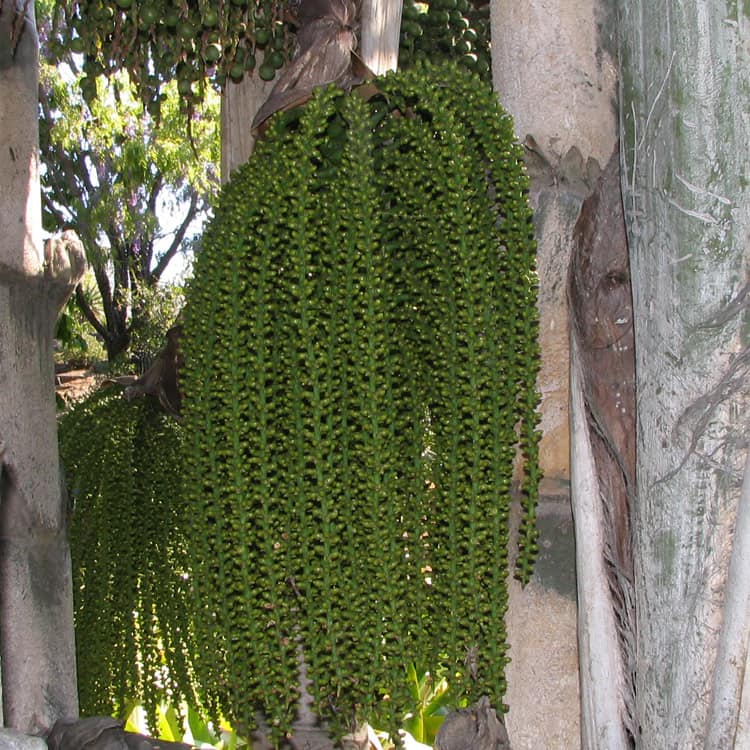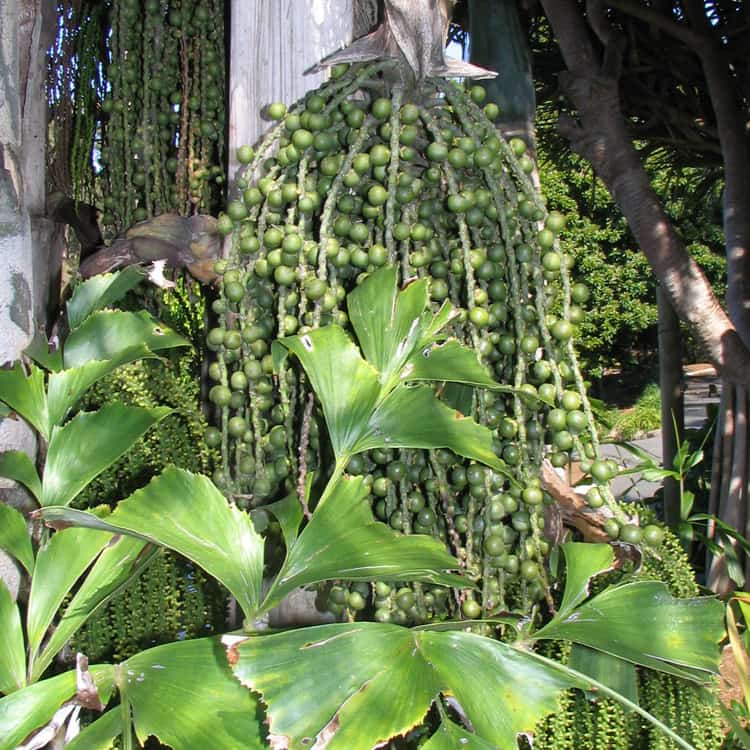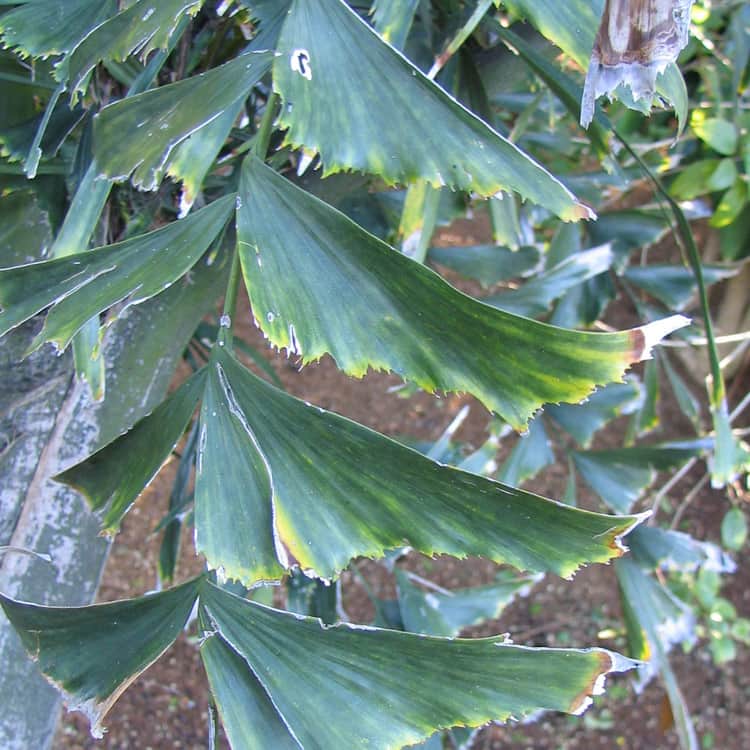Description
A group of distinctive palms comprising about twelve different species grown as tub or garden ornamentals. The plants may be either solitary stemmed or clumped.
The flowers occur in a many-branched inflorescence of numerous, cream or green coloured flowers.
The leaves or fronds are very long (up to 7m) with very distinctive fishtail shaped leaflets.
Toxicity
Symptoms
The whole plant contains needle-like calcium oxalate crystals which if chewed or eaten can produce a burning sensation in the mouth. Skin contact can result in burning, itching and dermatitis.
Images



Details
Common name: Fishtail palm
Botanical name: Caryota species (most common species Caryota mitis, Caryota urens)
Other common names: Clustered fishtail palm, solitary fishtail palm
Family: Arecaceae
General description: A group of distinctive palms comprising about twelve different species grown as tub or garden ornamentals. The plants may be either solitary stemmed or clumped.
Flowers: The flowers occur in a many-branched inflorescence of numerous, cream or green coloured flowers.
Leaves: The leaves or fronds are very long (up to 7m) with very distinctive fishtail shaped leaflets.
Fruit/Berries: The fruit are berries about 1cm in diameter, becoming red or black when mature. These are borne on numerous long stems.